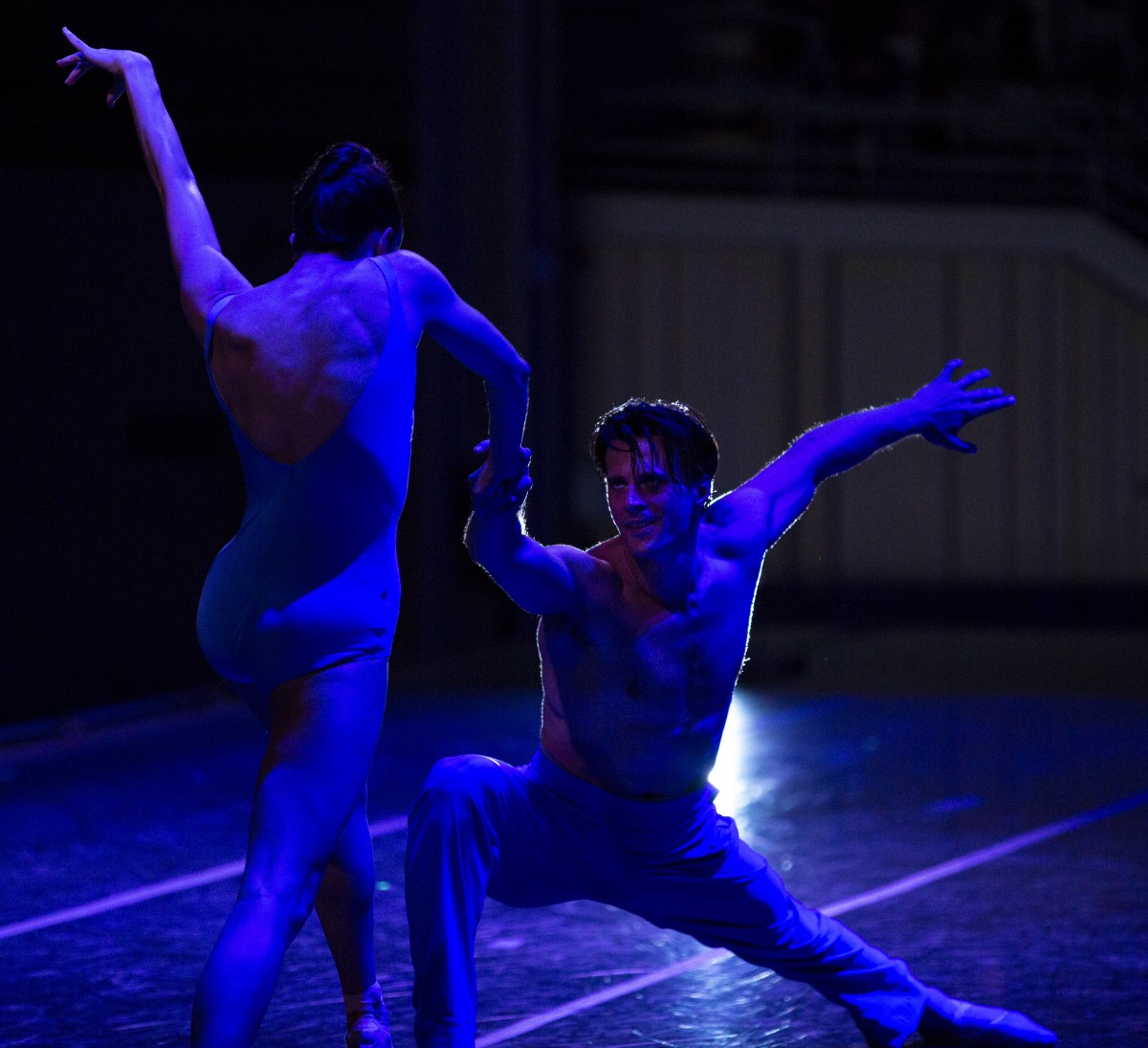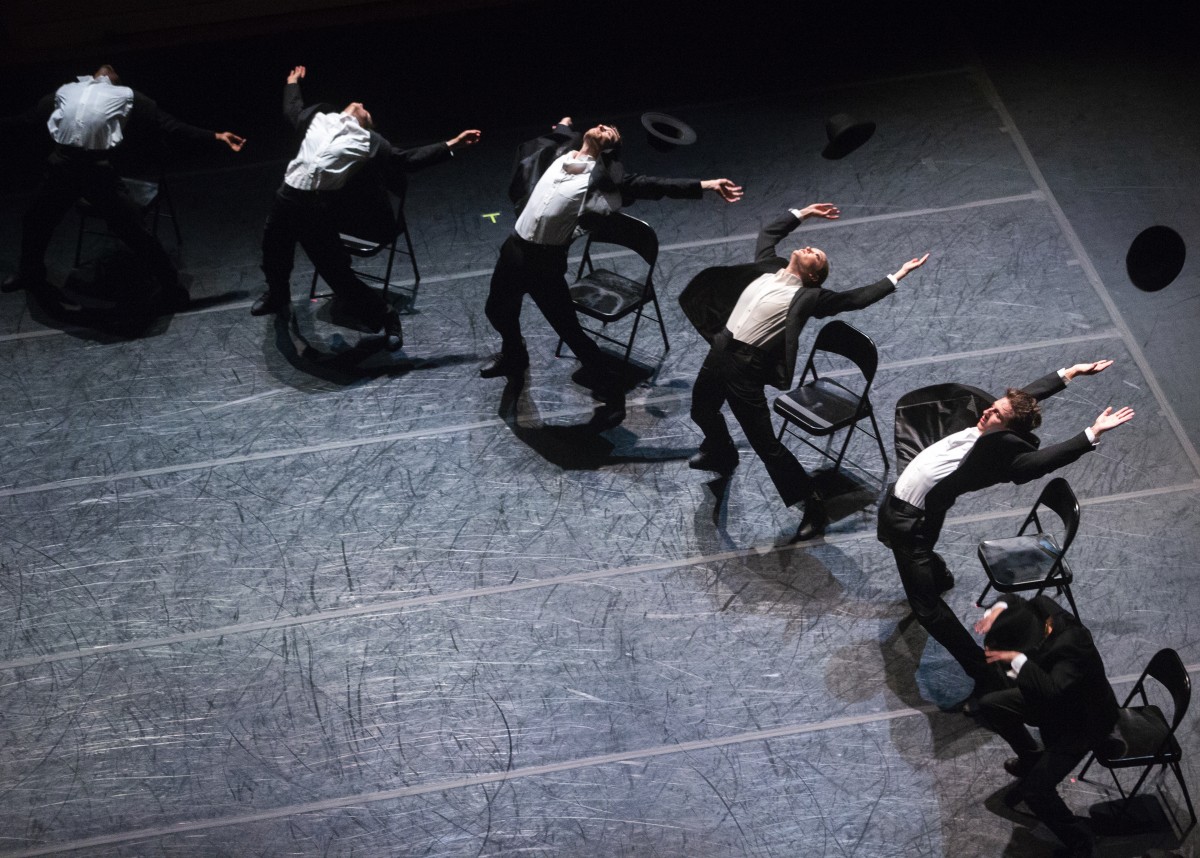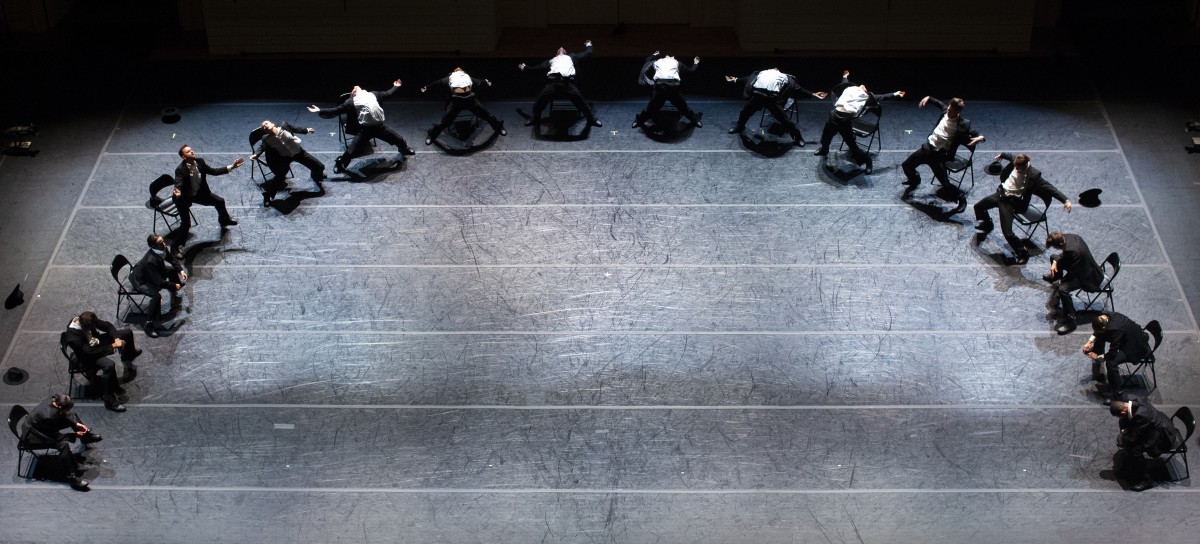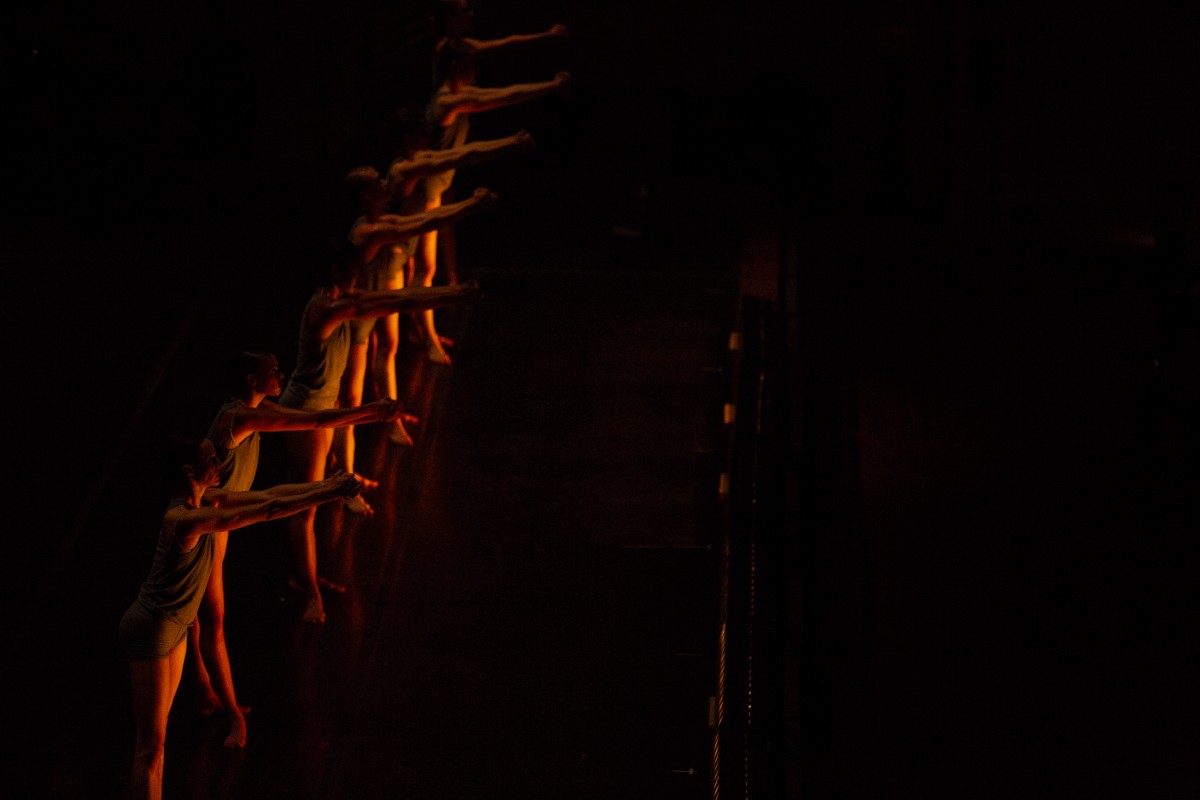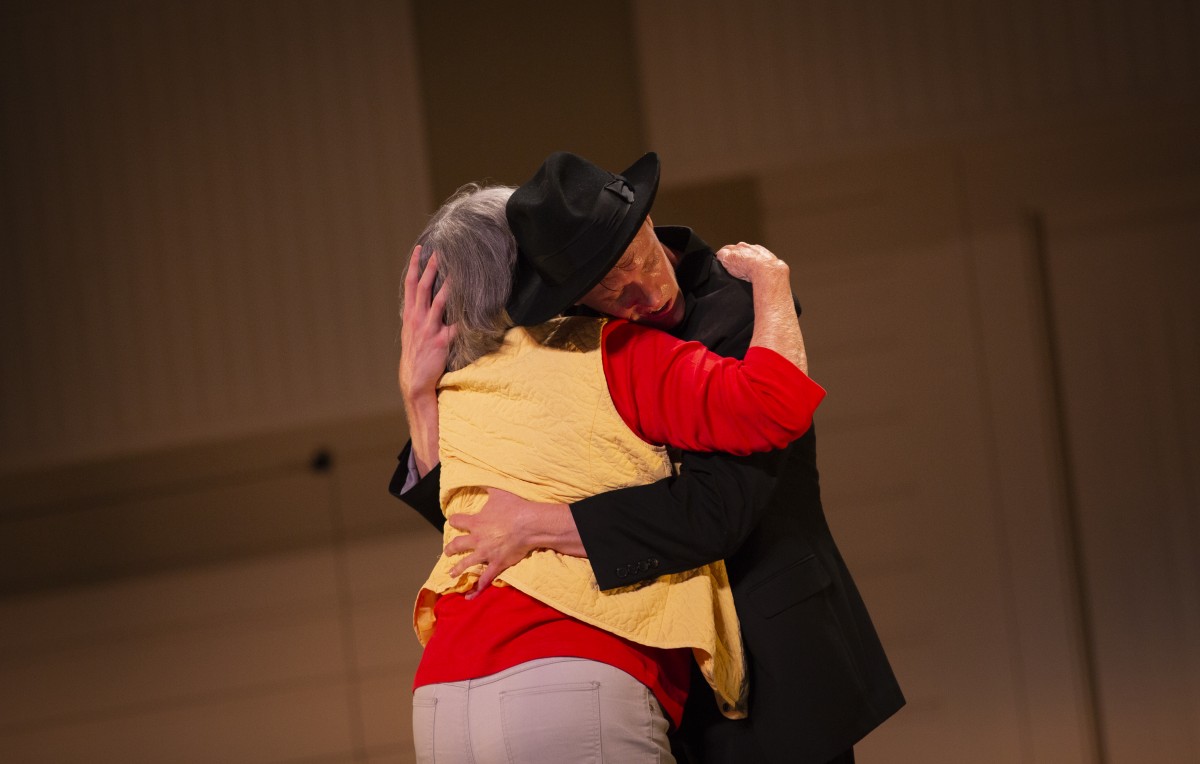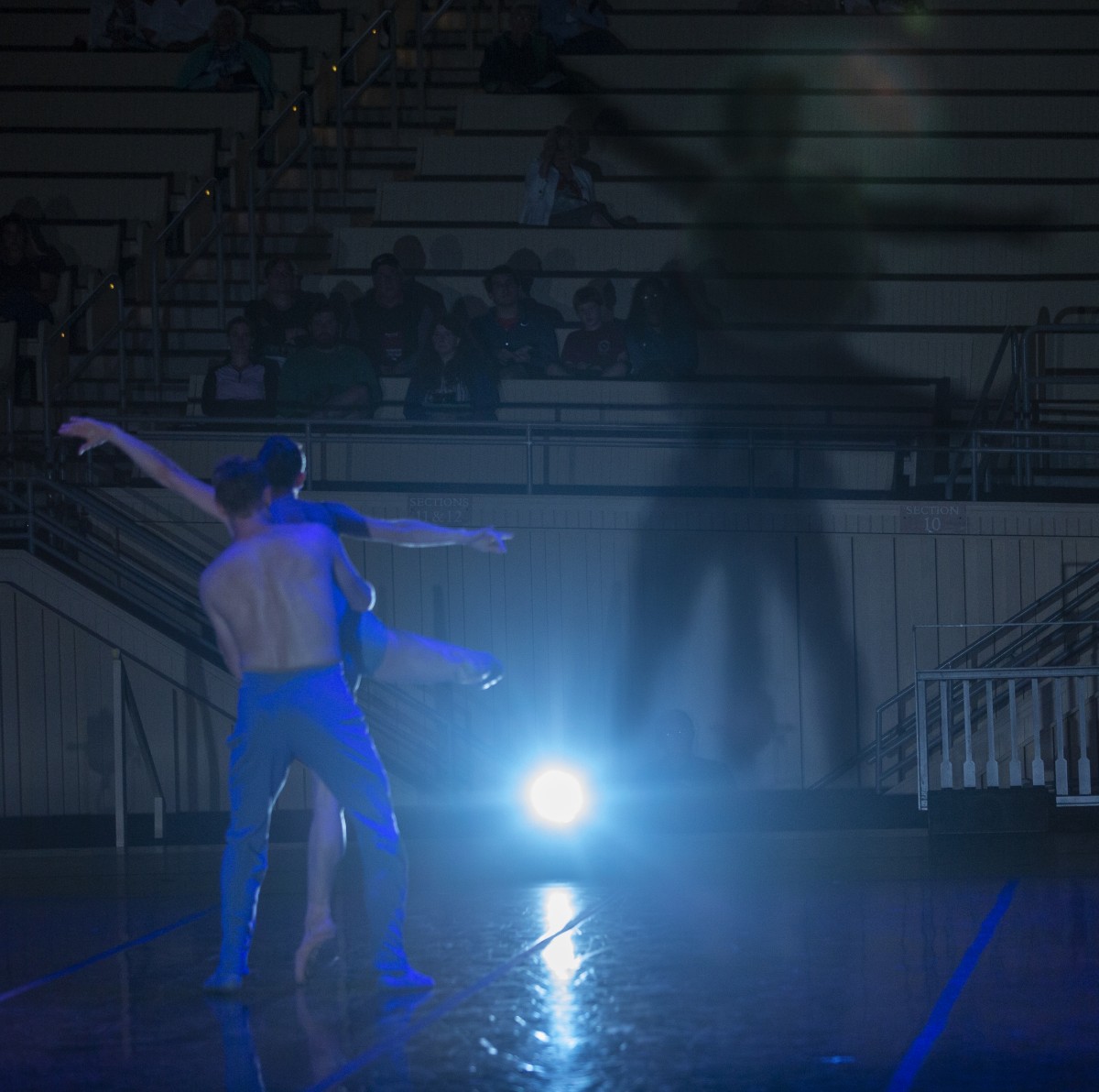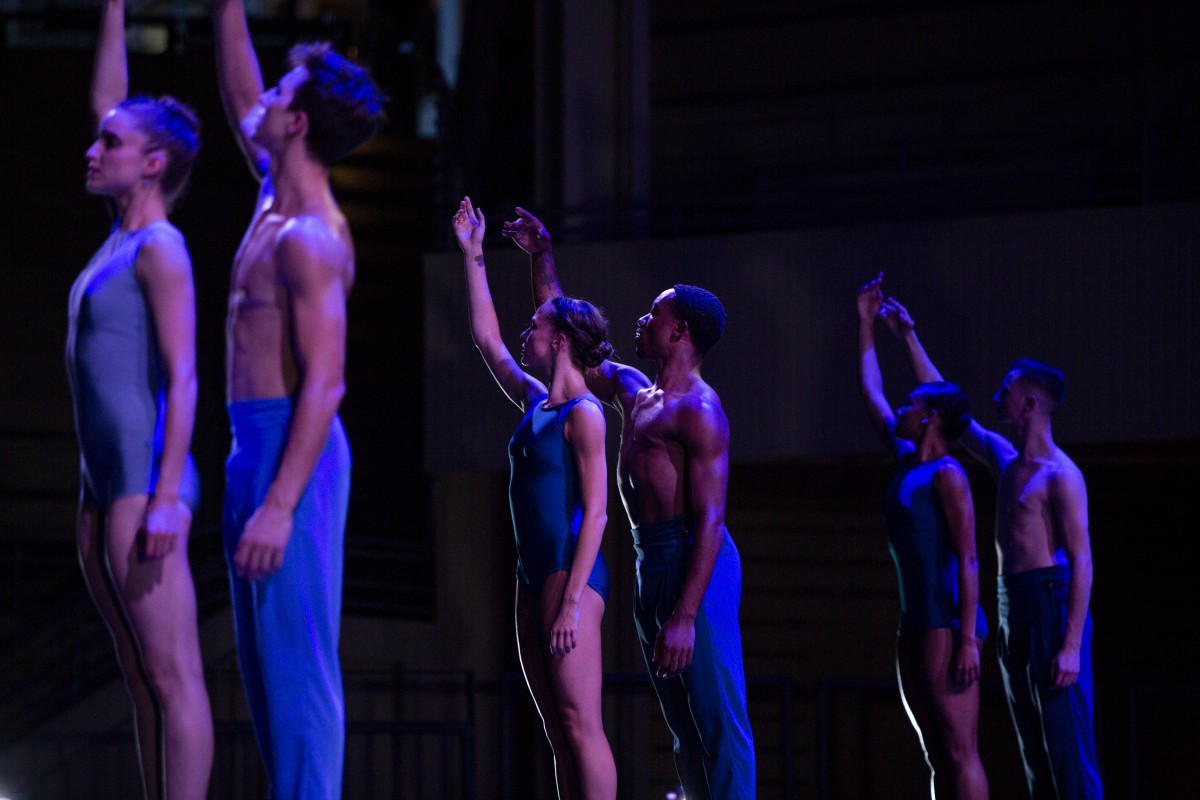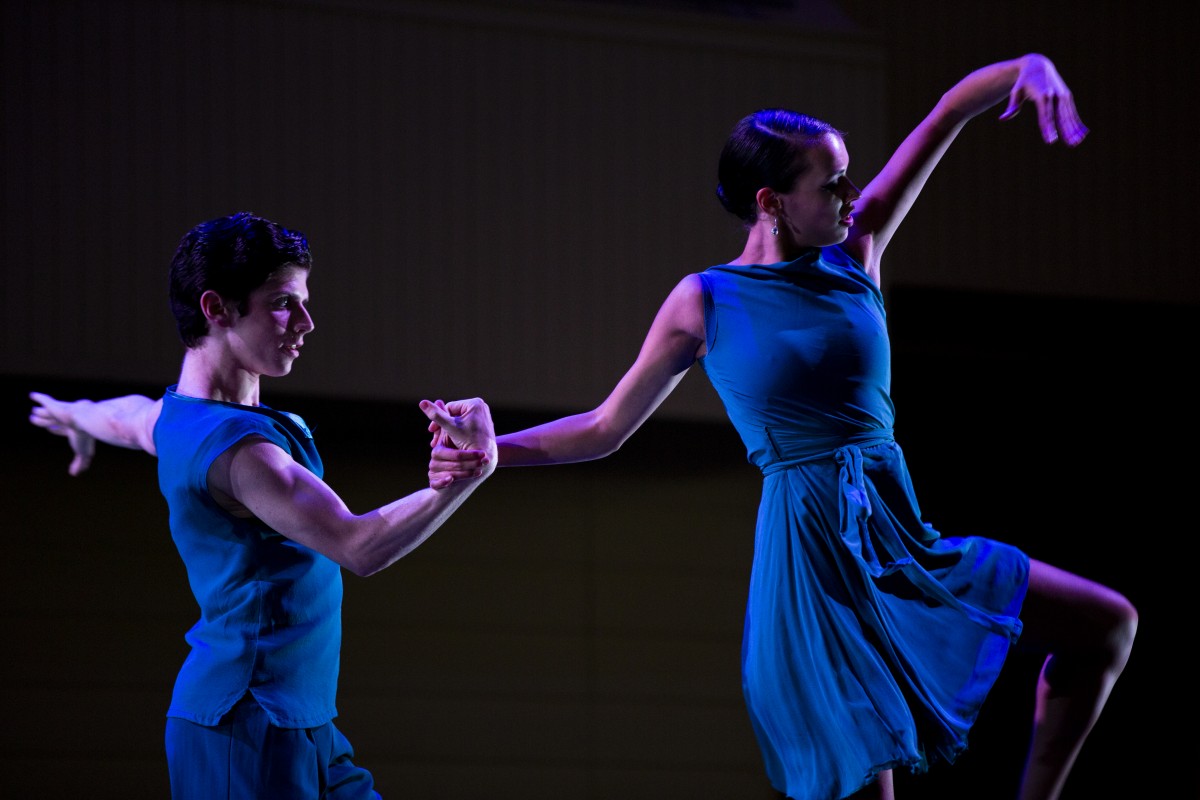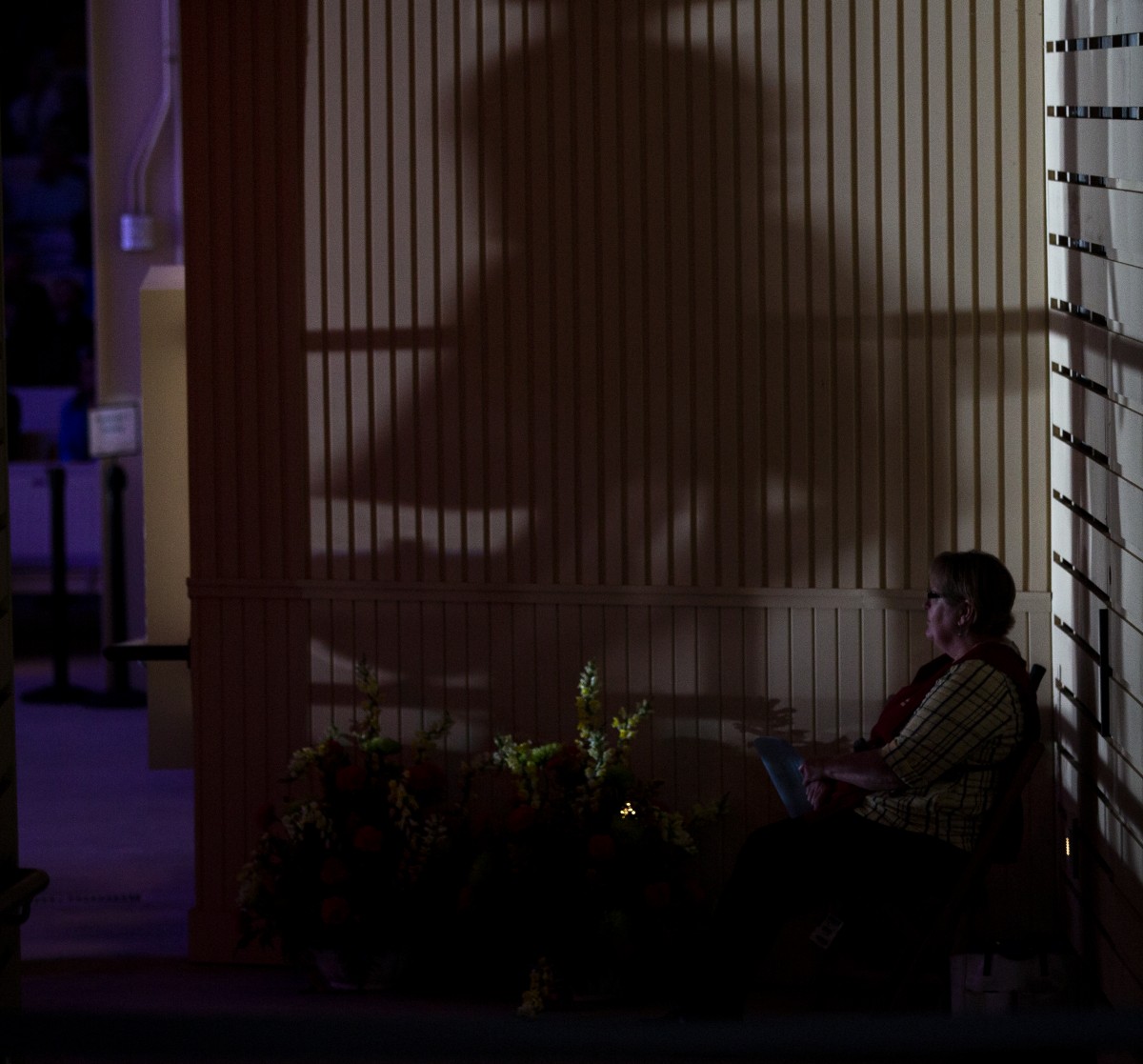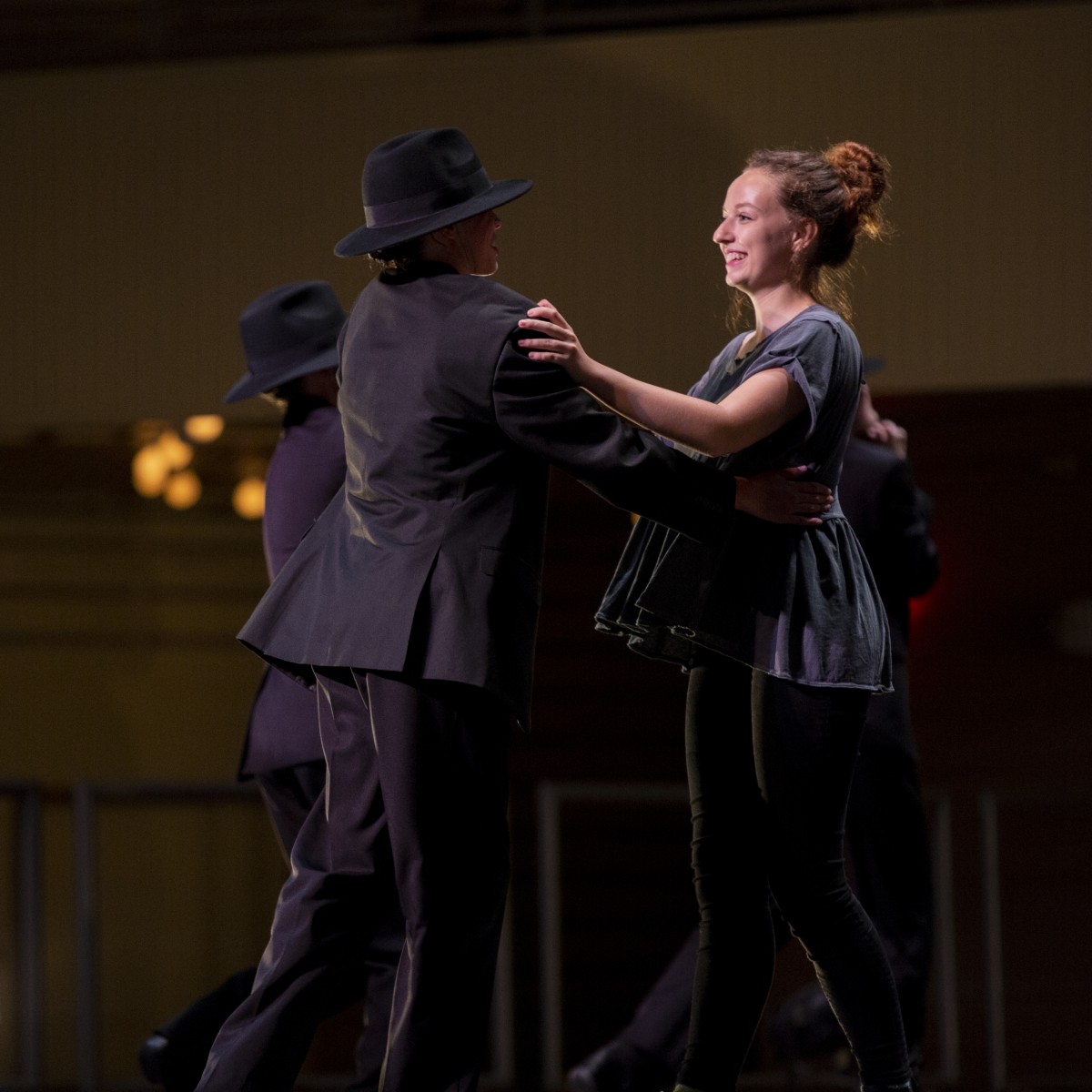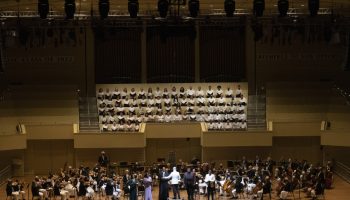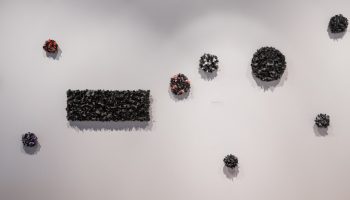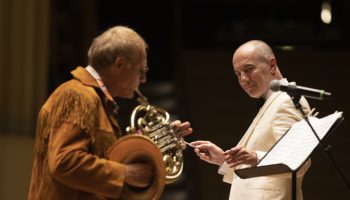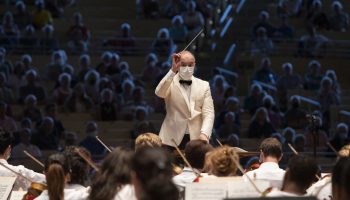Review by Rebecca J. Ritzel
Words rarely do dance justice.
The program for Wednesday night’s season-opening dance performance was a good example. On paper, Charlotte Ballet’s “International Series” was nothing to get excited about: Two works by unfamiliar choreographers set to music that is widely overused, plus a popular piece that was just performed at Chautauqua by another company last year.
Thankfully, this performance looked much better in real life than on paper, a solid start to Charlotte Ballet’s truncated summer residency and its first under new Artistic Director Hope Muir.
Muir probably could have selected a better opening duet, however. In a more traditional venue, Helen Pickett’s “Tsukiyo” is not performed on a bare stage. There can be steps and glowing orbs, as in its 2009 Boston premiere, or a stage full of dry-ice haze and elaborate lighting, as when the company has performed it in North Carolina.
Such effects would help set “Tsukiyo,” apart from a superior, more popular duet set to the exact same music: Arvo Pärt’s violin and piano sonata “Spiegel im Spiegel.” Christopher Wheeldon choreographed his duet “After the Rain” for New York City Ballet 2005, and the pas de deux movement has since become one of the most popular contemporary duets in the world. If you haven’t seen it, spend 10 minutes on Youtube, and you’ll understand why Pickett’s “Tsukiyo” is unsatisfying by comparison.
Wednesday night, Elizabeth Truell played the otherworldly, birdlike creature who utters to life through a series of exquisite arm movements, while Drew Grant served as her princely partner. She’s skittish and has never seen a man before, but they very quickly get to second base. Most turns in the piece are to the left, which is tricky for dancers, but looked very cool whenever Truell pivoted away from Grant. Their partnering got a bit muddled at moments, how- ever, and the man-meets-bird narrative didn’t carry through the entire piece.
Pickett was one of seven new choreographers who Muir brought into the Charlotte Ballet fold during her first season. Portuguese choreographer Filipe Portugal made his North American debut with “Stepping Over,” a piece for eight couples set to a piano concerto by Philip Glass.
Insert groans from dance fans who have seen way too many ballets and modern dance pieces set to music by both Pärt and Glass over the past 30 years. There are many more composers who write in a similar, minimalist mode, and choreographers need to listen to them. But Portugal is young, and probably wanted to take his turn. The middle adagio movement turns up in the score from the lm “The Hours.” Chances are very good you know it.
Musical choices aside, Portugal is a choreographer with promise, though “Stepping Over” could still use some refinement, more same-sex partnering and a bit more repetition of the most unique movement. He created the piece for eight couples; three principal pairs and 10 dancers from the corps. At times, it was difficult to tell whether some of the corps dancers’ timing was off, or the movement was deliberately syncopated.
The principal pairs were terrific, however, and very well rehearsed. Sarah Hayes Harkins, Alessandra Ball James and Chelsea Dumas are a trio of ballerinas who could perform in any major company, and Chautauqua audiences are lucky that these three expressive dancers have stayed in Charlotte. Each got several turns in the spotlight Wednesday, and were well partnered by James Kopecky, Grant and Josh Hall, respectively.
The piece is well structured, with some segues between duets, trios and ensemble movements. During the adagio, corps members played an elaborate game of Twister in the background shadows while the principal couples staged their own dramas in the spotlight. Several times Kopecky paddled Harkins (actual term used for men spinning ballerinas), stepped away, and returned to catch her just before she fell off balance.
After intermission, it was every dancer for him or herself, and you really cannot tell, because Ohad Naharin’s “Minus 16” is intentionally androgynous. The piece was performed at Chautauqua last year, making this an odd choice for Charlotte Ballet to open with in 2018. Still, this is a dance performance that is just a bit different every time, with elements of improvisation and even audience participation.
The center motif of the piece is performed with the dancers seated in a semi-circle, rising in motion to a Hebrew chant as if they are doing the wave. Their performance wasn’t seamless — ideally they need to not only ace the timing but also each seem equally spineless, so that they leap up then op backward like limp ragdolls. That’s a tough task for ballet dancers.
But at more lighthearted moments in the piece, it was very clear that Charlotte Ballet is a company full of performers who know how to cut loose and have fun. They danced to an absolutely fantastic techno version of “Somewhere Over the Rainbow,” then slipped off the stage into the audience.
I’ve seen “Minus 16” four times, in four different venues, but I have never seen the audience participation segment steal the show quite like this. Several ladies got lifted by their partners, all got intimate when the music switched to Dean Martin’s “Sway.” The last person offstage is nearly always a woman wearing red (to stand out against the dancers dark suits), and on Wednesday night, that woman was 79-year-old Margaret Campbell of Hickory, North Carolina.
When she finally came off stage, the standing ovation for her stopped the performance.
“I didn’t think I’d be able to walk,” she said, after Kopecky put her through her paces.
But she could, and she, like others, will be back again soon to see what surprises Charlotte Ballet has in store.
Rebecca J. Ritzel in a Washington, D.C.-based arts journalist who frequently contributes to City Paper, Washingtonian and The Washington Post.

